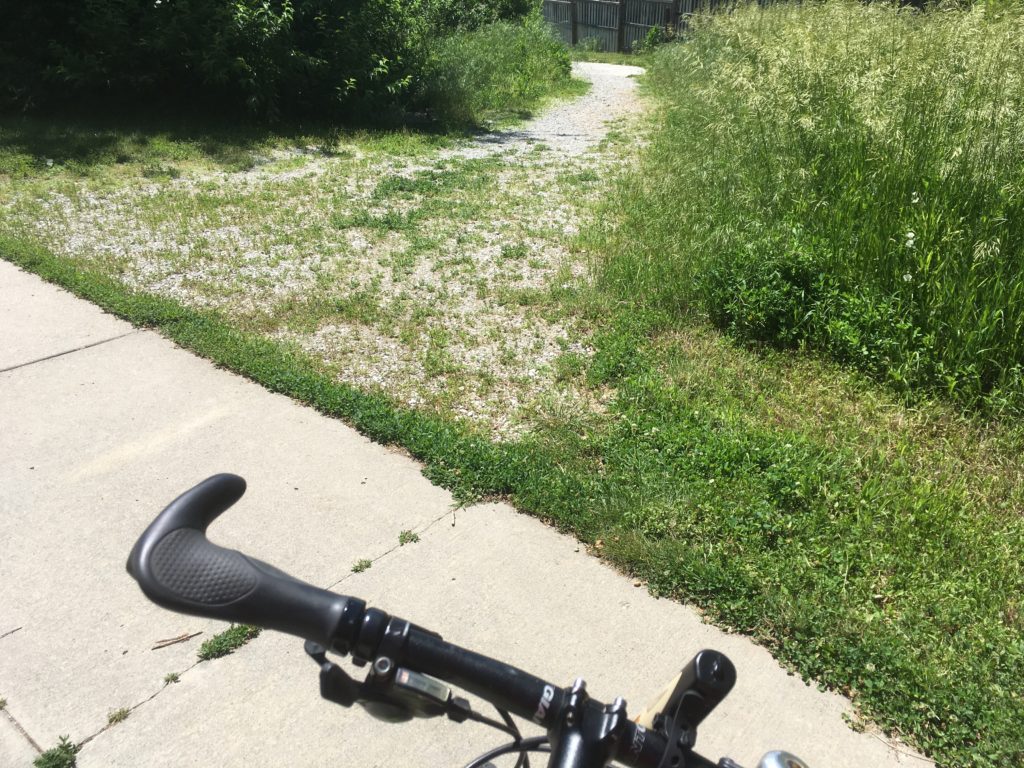We all have our favorite cut-throughs. Mine mostly involve connecting a trail to a street bicycle route or destination, or they connect two trails. Also, most seem to go North-South where trails are scarce. If you think like a motorist, you won’t find these little slices of biking satisfaction.
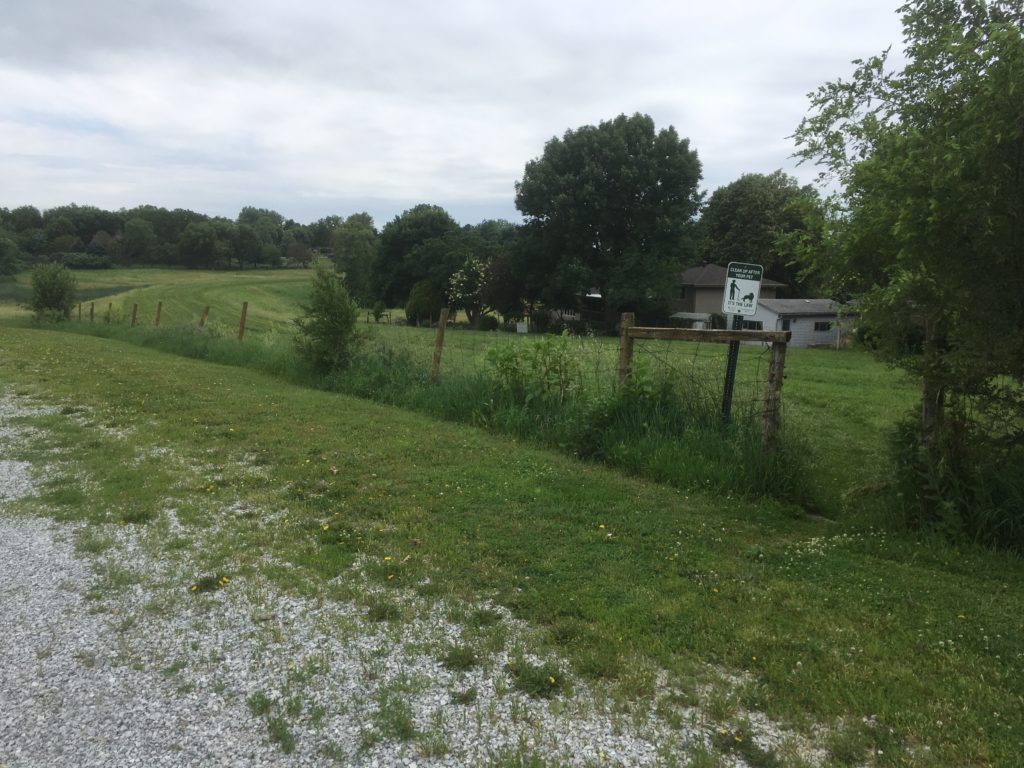
For example, if you’re headed to the College View farmers market on a Sunday morning from points North and East of 48th and Prescott, there’s nothing finer than picking up the trail at the north end of the Holmes Lake dam, in the back of a white-rocked church parking lot at about 69th and South, and taking it all the way to the end at Prescott St. From there it’s only a few blocks west to the market. Other cut-throughs involve parks with sidewalk but no street access and narrow bridges where I have sometimes seen fox playing.
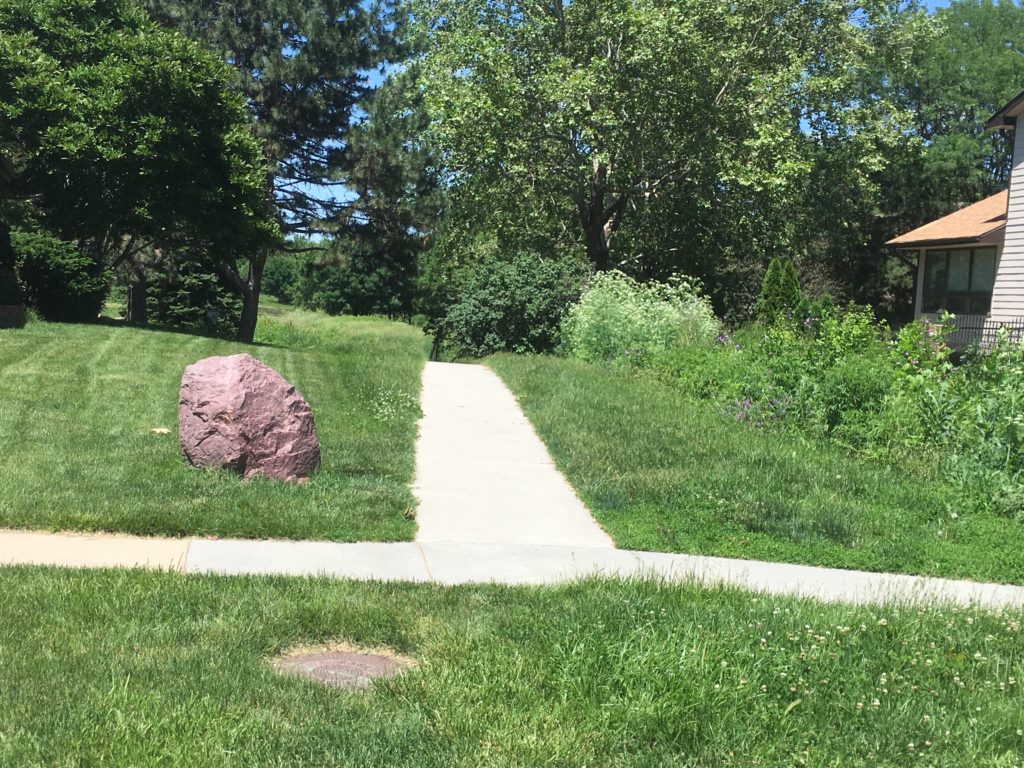
But what about long-cuts? Sometimes what looks shortest on the map isn’t shorter in real time, and is less enjoyable. When I used to get calls out to a work location in east Lincoln, any time of the day or night, I’d take street routes. After a bad experience with traffic near Woods Park, I decided to go north to the MoPac, then east, and drop back down south at 70th. Even though the distance was longer, it took the same amount of time and was more enjoyable. Maybe you know that your commute is the only chance you’re going to have to get a ride in that day. It’s fair to take the long way home, for maximum enjoyment.
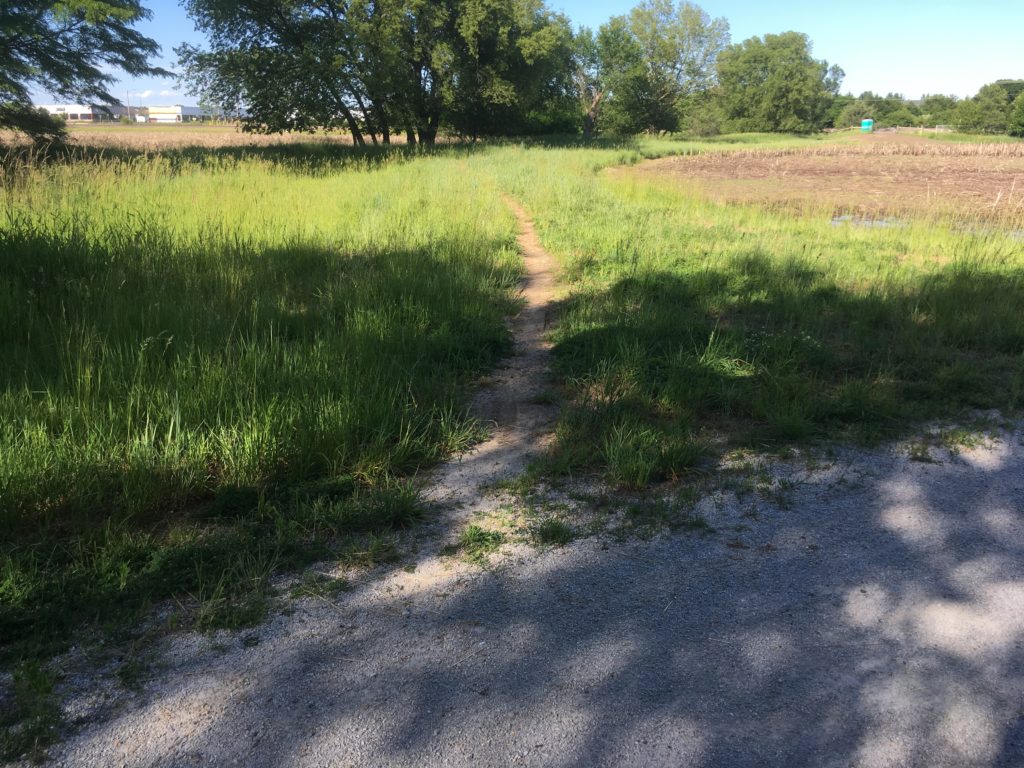
Three of the cut-throughs I use involve large apartment complex parking lots, and one a state agency that’s easier to get through than around.
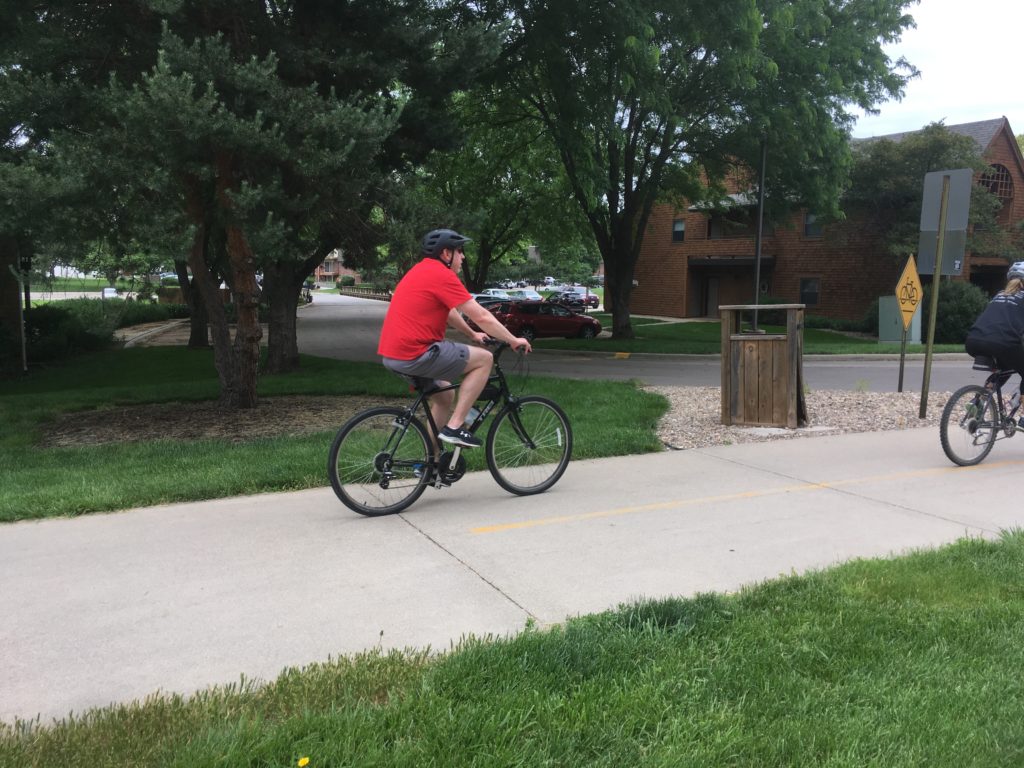
I understand that some short-cuts are illegal, and that others cause erosion. You should find alternate routes in those cases. Many exist in a gray area of legality, so just be respectful and careful or you might find it blocked one day.
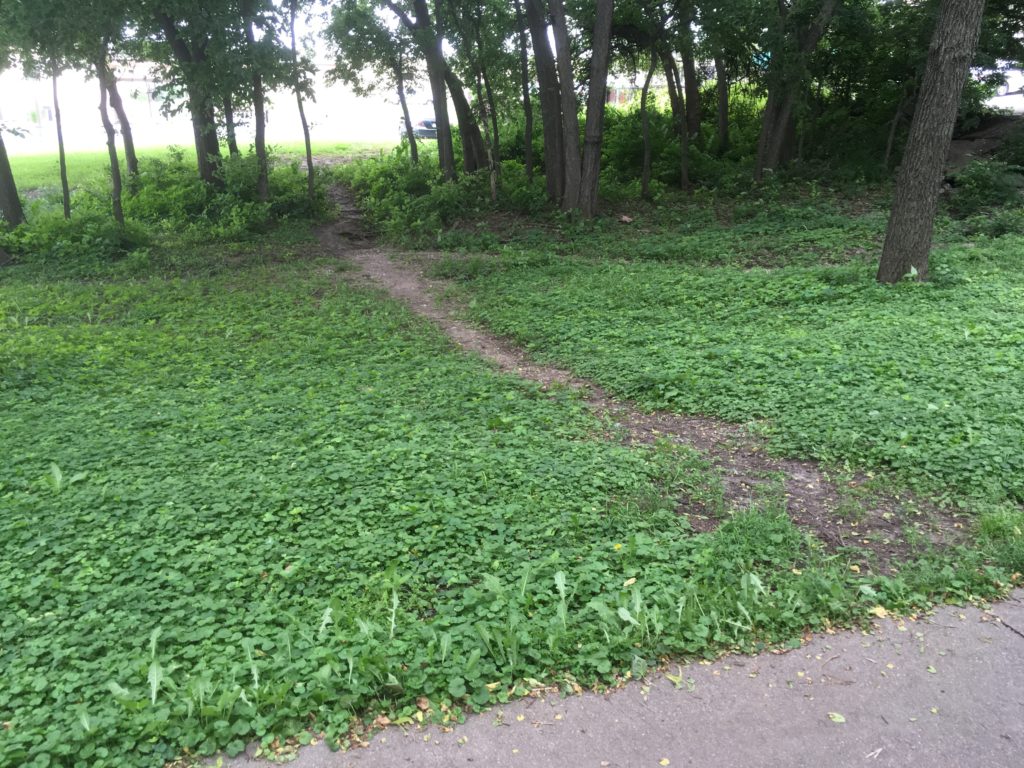
There is something to be learned from seeing where cut-throughs appear. Usually it shows that bicycle, or even pedestrian infrastructure was not initially taken into consideration in our car-centric society. With resting red lights, which are the rule rather than the exception here where trails cross roads, we see that the car-centric culture hasn’t changed much in regards to treating cyclists as equals on the streets. It will take more people on bikes being visible and advocating for change.
